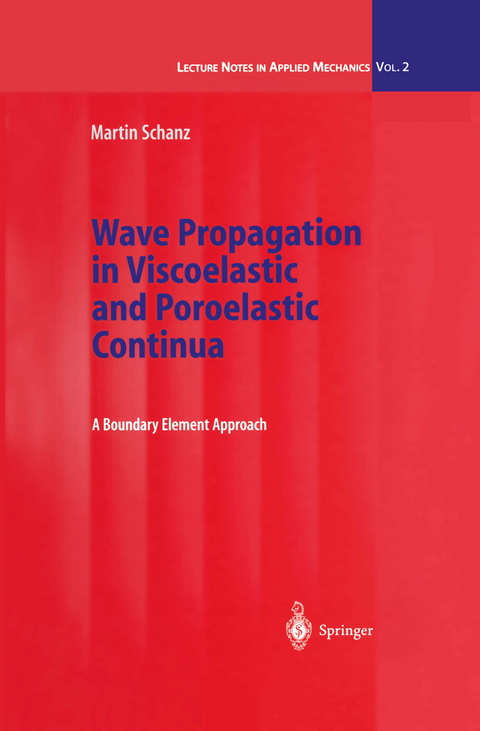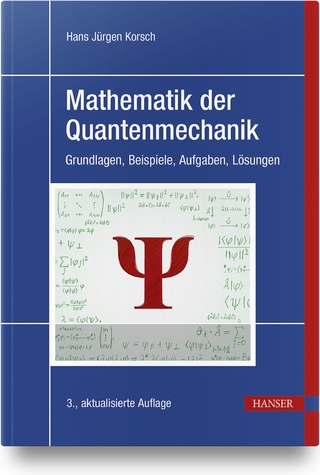
Wave Propagation in Viscoelastic and Poroelastic Continua
Springer Berlin (Verlag)
978-3-642-07490-5 (ISBN)
1. Introduction.- 2. Convolution quadrature method.- 2.1 Basic theory of the convolution quadrature method.- 2.2 Numerical tests.- 3. Viscoelastically supported Euler-Bernoulli beam.- 3.1 Integral equation for a beam resting on viscoelastic foundation.- 3.2 Numerical example.- 4. Time domain boundary element formulation.- 4.1 Integral equation for elastodynamics.- 4.2 Boundary element formulation for elastodynamics.- 4.3 Validation of proposed method: Wave propagation in a rod.- 5. Viscoelastodynamic boundary element formulation.- 5.1 Viscoelastic constitutive equation.- 5.2 Boundary integral equation.- 5.3 Boundary element formulation.- 5.4 Validation of the method and parameter study.- 6. Poroelastodynamic boundary element formulation.- 6.1 Biot's theory of poroelasticity.- 6.2 Fundamental solutions.- 6.3 Poroelastic Boundary Integral Formulation.- 6.4 Numerical studies.- 7. Wave propagation.- 7.1 Wave propagation in poroelastic one-dimensional column.- 7.2 Waves in half space.- 8. Conclusions - Applications.- 8.1 Summary.- 8.2 Outlook on further applications.- A. Mathematic preliminaries.- A.1 Distributions or generalized functions.- A.2 Convolution integrals.- A.3 Laplace transform.- A.4 Linear multistep method.- B. BEM details.- B.1 Fundamental solutions.- B.1.1 Visco- and elastodynamic fundamental solutions.- B.1.2 Poroelastodynamic fundamental solutions.- B.2 "Classical" time domain BE formulation.- Notation Index.- References.
| Erscheint lt. Verlag | 3.12.2010 |
|---|---|
| Reihe/Serie | Lecture Notes in Applied and Computational Mechanics |
| Zusatzinfo | X, 170 p. |
| Verlagsort | Berlin |
| Sprache | englisch |
| Maße | 155 x 235 mm |
| Gewicht | 282 g |
| Themenwelt | Mathematik / Informatik ► Mathematik ► Analysis |
| Mathematik / Informatik ► Mathematik ► Wahrscheinlichkeit / Kombinatorik | |
| Naturwissenschaften ► Physik / Astronomie ► Mechanik | |
| Technik ► Maschinenbau | |
| Schlagworte | BEM • Boundary element method • boundary element methods • Computational Method • computational methods • Elasticity • Fundament • Mechanics • Numerical Methods • poroelasticity • Porous Media • Soil Mechanics • solids • Vibration • vibrations • viscoelasticity • Wave • Waves |
| ISBN-10 | 3-642-07490-1 / 3642074901 |
| ISBN-13 | 978-3-642-07490-5 / 9783642074905 |
| Zustand | Neuware |
| Haben Sie eine Frage zum Produkt? |
aus dem Bereich


